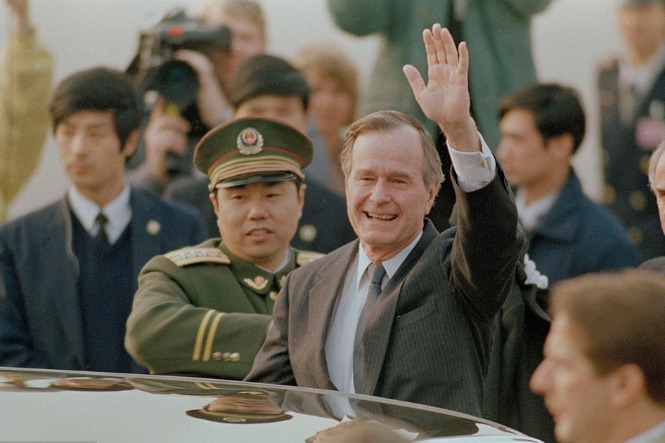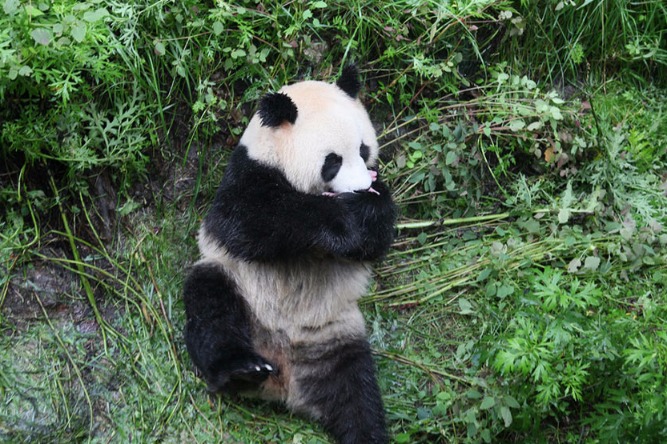An inherent territory of China
III.
Backroom Deals Between the United States and Japan Concerning Diaoyu Dao are Illegal and Invalid
Diaoyu Dao was returned to China after the Second World War. However, the United States arbitrarily included Diaoyu Dao under its trusteeship in the 1950s and "returned" the "power of administration" over Diaoyu Dao to Japan in the 1970s. The backroom deals between the United States and Japan concerning Diaoyu Dao are acts of grave violation of China's territorial sovereignty. They are illegal and invalid. They have not and cannot change the fact that Diaoyu Dao belongs to China.
1. Diaoyu Dao was returned to China after the Second World War
In December 1941, the Chinese government officially declared war against Japan together with the abrogation of all treaties between China and Japan. In December 1943, the Cairo Declaration stated in explicit terms that "all the territories Japan has stolen from the Chinese, such as Manchuria, Formosa [Taiwan] and the Pescadores, shall be restored to the Republic of China. Japan will also be expelled from all other territories which she has taken by violence and greed." In July 1945, the Potsdam Proclamation stated in Article 8: "The terms of the Cairo Declaration shall be carried out and Japanese sovereignty shall be limited to the islands of Honshu, Hokkaido, Kyushu, Shikoku and such minor islands as we determine." On September 2, 1945, the Japanese government accepted the Potsdam Proclamation in explicit terms with the Japanese Instrument of Surrender and pledged to faithfully fulfill the obligations enshrined in the provisions of the Potsdam Proclamation. On January 29, 1946, the Supreme Commander for the Allied Powers Instruction (SCAPIN) No.677 clearly defined Japan's power of administration to "include the four main islands of Japan (Hokkaido, Honshu, Kyushu and Shikoku) and the approximately 1,000 smaller adjacent islands, including the Tsushima Islands and the Ryukyu Islands north of the 30th parallel of North Latitude". On October 25, 1945, the ceremony for accepting Japan's surrender in Taiwan Province of the China War Theater was held in Taipei, and the Chinese government officially recovered Taiwan. On September 29, 1972, the Japanese government committed with all seriousness in the China-Japan Joint Statement that "the Government of Japan fully understands and respects this stand of the Government of the People's Republic of China [Taiwan is an inalienable part of the territory of the People's Republic of China], and it firmly maintains its stand under Article 8 of the Potsdam Proclamation."
These facts show that in accordance with the Cairo Declaration, the Potsdam Proclamation and the Japanese Instrument of Surrender, Diaoyu Dao, as affiliated islands of Taiwan, should be returned, together with Taiwan, to China.
2. The United States illegally included Diaoyu Dao under its trusteeship
On September 8, 1951, Japan, the United States and a number of other countries signed the Treaty of Peace with Japan (commonly known as the Treaty of San Francisco) with China being excluded from it. The treaty placed the Nansei Islands south of the 29th parallel of North Latitude under United Nations' trusteeship, with the United States as the sole administering authority. It should be pointed out that the Nansei Islands placed under the administration of the United States in the Treaty of Peace with Japan did not include Diaoyu Dao.
The United States Civil Administration of the Ryukyu Islands (USCAR) issued Civil Administration Ordinance No. 68 (Provisions of the Government of the Ryukyu Islands) on February 29, 1952 and Civil Administration Proclamation No. 27 (defining the "geographical boundary lines of the Ryukyu Islands") on December 25, 1953, arbitrarily expanding its jurisdiction to include China's Diaoyu Dao. However, there were no legal grounds whatsoever for the US act, to which China has firmly opposed.
3. The United States and Japan conducted backroom deals concerning the "power of administration" over Diaoyu Dao
On June 17, 1971, Japan and the United States signed the Agreement Concerning the Ryukyu Islands and the Daito Islands (Okinawa Reversion Agreement), which provided that any and all powers of administration over the Ryukyu Islands and Diaoyu Dao would be "returned" to Japan. The Chinese people, including overseas Chinese, all condemned such a backroom deal. On December 30, 1971, the Chinese Ministry of Foreign Affairs issued a solemn statement, pointing out that "it is completely illegal for the government of the United States and Japan to include China's Diaoyu Dao Islands into the territories to be returned to Japan in the Okinawa Reversion Agreement and that it can by no means change the People's Republic of China's territorial sovereignty over the Diaoyu Dao Islands". The Taiwan authorities also expressed firm opposition to the backroom deal between the United States and Japan.
In response to the strong opposition of the Chinese government and people, the United States had to publicly clarify its position on the sovereignty over Diaoyu Dao. In October 1971, the US administration stated that "the United States believes that a return of administrative rights over those islands to Japan, from which the rights were received, can in no way prejudice any underlying claims. The United States cannot add to the legal rights Japan possessed before it transferred administration of the islands to us, nor can the United States, by giving back what it received, diminish the rights of other claimants... The United States has made no claim to Diaoyu Dao and considers that any conflicting claims to the islands are a matter for resolution by the parties concerned." In November 1971, when presenting the Okinawa Reversion Agreement to the US Senate for ratification, the US Department of State stressed that the United States took a neutral position with regard to the competing Japanese and Chinese claims to the islands, despite the return of administrative rights over the islands to Japan.
IV.
Japan's Claim of Sovereignty over Diaoyu Dao Is Totally Unfounded
On March 8, 1972, Japan's Ministry of Foreign Affairs issued the Basic View on the Sovereignty over the Senkaku Islands in an attempt to explain the Japanese government's claims of sovereignty over Diaoyu Dao. First, Japan claims that Diaoyu Dao was "terra nullius" and not part of Pescadores, Formosa [Taiwan] or their affiliated islands which were ceded to Japan by the Qing government in accordance with the Treaty of Shimonoseki. Second, Japan claims that Diaoyu Dao was not included in the territory which Japan renounced under Article 2 of the Treaty of San Francisco, but was placed under the administration of the United States as part of the Nansei Islands in accordance with Article 3 of the said treaty, and was included in the area for which the administrative rights were reverted to Japan in accordance with the Okinawa Reversion Agreement. Third, Japan claims that China didn't regard Diaoyu Dao as part of Taiwan and had never challenged the inclusion of the islands in the area over which the United States exercised administrative rights in accordance with Article 3 of the Treaty of San Francisco.
Such claims by Japan fly in the face of facts and are totally unfounded.
Diaoyu Dao belongs to China. It is by no means "terra nullius". China is the indisputable owner of Diaoyu Dao as it had exercised valid jurisdiction over the island for several hundred years long before the Japanese people "discovered" it. As stated above, voluminous Japanese official documents prove that Japan was fully aware that according to international law, Diaoyu Dao has long been part of China and was not "terra nullius". Japan's act to include Diaoyu Dao as "terra nullius" into its territory based on the "occupation" principle is in fact an illegal act of occupying Chinese territory and has no legal effect according to international law.
Diaoyu Dao has always been affiliated to China's Taiwan Island both in geographical terms and in accordance with China's historical jurisdiction practice. Through the unequal Treaty of Shimonoseki, Japan forced the Qing court to cede to it "the island of Taiwan, together with all islands appertaining or belonging to it", including Diaoyu Dao. International legal documents such as the Cairo Declaration and the Potsdam Proclamation provide that Japan must unconditionally return the territories it has stolen from China. These documents also clearly define Japan's territory, which by no means includes Diaoyu Dao. Japan's attempted occupation of Diaoyu Dao, in essence, constitutes a challenge to the post-war international order established by such legal documents as the Cairo Declaration and the Potsdam Proclamation and seriously violates the obligations Japan should undertake according to international law.
Diaoyu Dao was not placed under the trusteeship established by the Treaty of San Francisco, which was signed between the United States and other countries with Japan and is partial in nature. The United States arbitrarily expanded the scope of trusteeship to include Diaoyu Dao, which is China's territory, and later "returned" the "power of administration" over Diaoyu Dao to Japan. This has no legal basis and is totally invalid according to international law. The government and people of China have always explicitly opposed such illegal acts of the United States and Japan.
V.
China has Taken Resolute Measures to Safeguard its Sovereignty over Diaoyu Dao
China has, over the past years, taken resolute measures to safeguard its sovereignty over Diaoyu Dao.
China has, through the diplomatic channel, strongly protested against and condemned the backroom deals between the United States and Japan over Diaoyu Dao. On August 15, 1951, before the San Francisco Conference, the Chinese government made a statement: "If the People's Republic of China is excluded from the preparation, formulation and signing of the peace treaty with Japan, it will, no matter what its content and outcome are, be regarded as illegal and therefore invalid by the central people's government." On September 18, 1951, the Chinese government issued another statement stressing that the Treaty of San Francisco is illegal and invalid and can under no circumstances be recognized. In 1971, responding to the ratifications of the Okinawa Reversion Agreement by the US Congress and Japanese Diet, the Chinese Foreign Ministry issued a stern statement which pointed out that the Diaoyu Dao Islands have been an indivisible part of the Chinese territory since ancient times.
In response to Japan's illegal violation of China's sovereignty over Diaoyu Dao, the Chinese government has taken active and forceful measures such as issuing diplomatic statements, making serious representations with Japan and submitting notes of protest to the United Nations, solemnly stating China's consistent proposition, principle and position, firmly upholding China's territorial sovereignty and maritime rights and interests, and earnestly protecting the safety of life and property of Chinese citizens.
China has enacted domestic laws, which clearly provide that Diaoyu Dao belongs to China. In 1958, the Chinese government released a statement on the territorial sea, announcing that Taiwan and its adjacent islands belong to China. In light of Japan's repeated violations of China's sovereignty over Diaoyu Dao since the 1970s, China adopted the Law of the People's Republic of China on the Territorial Sea and the Contiguous Zone in 1992, which unequivocally prescribes that "Taiwan and the various affiliated islands including Diaoyu Dao" belong to China. The 2009 Law of the People's Republic of China on the Protection of Offshore Islands establishes the protection, development and management system of offshore islands and prescribes the determination and announcement of the names of offshore islands, on the basis of which China announced the standard names of Diaoyu Dao and some of its affiliated islands in March 2012. On September 10, 2012, the Chinese government issued a statement announcing the baselines of the territorial sea of Diaoyu Dao and its affiliated islands. On September 13, the Chinese government deposited the coordinates table and chart of the base points and baselines of the territorial sea of Diaoyu Dao and its affiliated islands with the Secretary-General of the United Nations.
China has maintained routine presence and exercised jurisdiction in the waters of Diaoyu Dao. China's marine surveillance vessels have been carrying out law enforcement patrol missions in the waters of Diaoyu Dao, and fishery administration law enforcement vessels have been conducting regular law enforcement patrols and fishery protection missions to uphold normal fishing order in the waters of Diaoyu Dao. China has also exercised administration over Diaoyu Dao and the adjacent waters by releasing weather forecasts and through oceanographic monitoring and forecasting.
Over the years, the issue of Diaoyu Dao has attracted attention from Hong Kong and Macao compatriots, Taiwan compatriots and overseas Chinese. Diaoyu Dao has been an inherent territory of China since ancient times. This is the common position of the entire Chinese nation. The Chinese nation has the strong resolve to uphold state sovereignty and territorial integrity. The compatriots across the Taiwan Straits stand firmly together on matters of principle to the nation and in the efforts to uphold national interests and dignity. The compatriots from Hong Kong, Macao and Taiwan and the overseas Chinese have all carried out various forms of activities to safeguard China's territorial sovereignty over Diaoyu Dao, strongly expressing the just position of the Chinese nation, and displaying to the rest of the world that the peace-loving Chinese nation has the determination and the will to uphold China's state sovereignty and territorial integrity.
Conclusion
Diaoyu Dao has been an inherent territory of China since ancient times, and China has indisputable sovereignty over Diaoyu Dao. As China and Japan were normalizing relations and concluding the Sino-Japanese Treaty of Peace and Friendship in the 1970s, the then leaders of the two countries, acting in the larger interest of China-Japan relations, reached important understanding and consensus on "leaving the issue of Diaoyu Dao to be resolved later." But in recent years, Japan has repeatedly taken unilateral measures concerning Diaoyu Dao and conducted in particular the so-called "nationalization" of Diaoyu Dao. This severely infringed upon China's sovereignty and ran counter to the understanding and consensus reached between the older generation of leaders of the two countries. It has not only seriously damaged China-Japan relations, but also rejected and challenged the outcomes of the victory of the World Anti-Fascist War.
China strongly urges Japan to respect history and international law and immediately stop all actions that undermine China's territorial sovereignty. The Chinese government has the unshakable resolve and will to uphold the nation's territorial sovereignty. It has the confidence and ability to safeguard China's state sovereignty and territorial integrity.


















